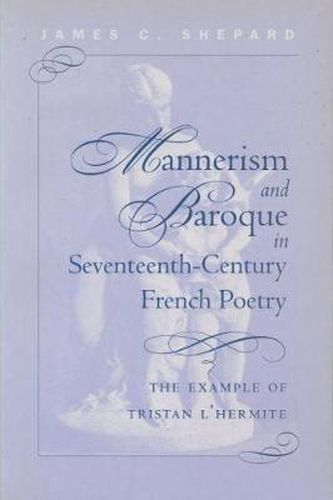Readings Newsletter
Become a Readings Member to make your shopping experience even easier.
Sign in or sign up for free!
You’re not far away from qualifying for FREE standard shipping within Australia
You’ve qualified for FREE standard shipping within Australia
The cart is loading…






This book examines mannerism and baroque in the poetry of Tristan L'Hermite, a leading lyric poet of the seventeenth century. After presenting a history of scholarship on both the mannerist and baroque styles, James Shepard offers a definition of each as it applies to seventeenth-century lyric poetry. He then turns to Tristan’s works, examining the poems contained in the Plaintes d'Acante et autres ouvres, Les Amours, La Lyre, and the Vers heroiques; his religious poetry; La Renomme; and his recently discovered poems.
Shepard reveals Tristan’s amatory poetry to be mannerist and his heroic and religious poetry to be baroque. Many poems, however, contain elements of both styles. This supports Frank J. Warnke’s theory that Baroque is the period style, with mannerism and baroque being two aspects of the period. Shepard also uncovers a baroque dompte style-the toned-down baroque that Helmut Hatzfeld and others argue characterized French classicism-in some of Tristan’s heroic and religious poetry.
$9.00 standard shipping within Australia
FREE standard shipping within Australia for orders over $100.00
Express & International shipping calculated at checkout
This book examines mannerism and baroque in the poetry of Tristan L'Hermite, a leading lyric poet of the seventeenth century. After presenting a history of scholarship on both the mannerist and baroque styles, James Shepard offers a definition of each as it applies to seventeenth-century lyric poetry. He then turns to Tristan’s works, examining the poems contained in the Plaintes d'Acante et autres ouvres, Les Amours, La Lyre, and the Vers heroiques; his religious poetry; La Renomme; and his recently discovered poems.
Shepard reveals Tristan’s amatory poetry to be mannerist and his heroic and religious poetry to be baroque. Many poems, however, contain elements of both styles. This supports Frank J. Warnke’s theory that Baroque is the period style, with mannerism and baroque being two aspects of the period. Shepard also uncovers a baroque dompte style-the toned-down baroque that Helmut Hatzfeld and others argue characterized French classicism-in some of Tristan’s heroic and religious poetry.